Maxim Suraev
Recipient of the Hero of the Russian Federation award
Decree Dates
Monuments
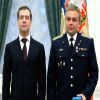
Maxim Suraev is a test cosmonaut from the cosmonaut team at the Research Test Center for Cosmonaut Training named after Yuri Gagarin, a Federal State Budgetary Institution. He holds the rank of Colonel.
Born on May 24, 1972, in Chelyabinsk, Maxim Suraev comes from a military family. He is a Russian national. In 1989, he completed his education at secondary school No. 5 in Noginsk, Moscow Region. In 1994, he graduated with distinction from the Kachinsk Higher Military Aviation School of Pilots, which is named after A.F. Myasnikov. In 1997, he graduated with honors from the Air Force Engineering Academy, named after N.E. Zhukovsky. In 2007, he completed his studies at the Russian Academy of Public Administration under the President of the Russian Federation.
Since 1989, he has served in the military. From 1994 to 1997, he was assigned to combat units in the Air Force after completing his schooling. During this time, he gained expertise in flying the L-39 and Su-27 aircraft, accumulating approximately 700 hours of flight experience. He also completed over 100 parachute jumps. In 2012, he was honorably discharged from active duty and transitioned into the reserve.
In June 1997, he was accepted as a candidate test cosmonaut in the cosmonaut squadron at the Gagarin Cosmonaut Training Research Test Center. Between 1998 and 1999, he underwent comprehensive space training. By December 1999, he was officially certified as a test cosmonaut. Starting in January 2000, he began training for flights to the International Space Station as part of a cosmonaut group.
As the commander of the Soyuz TMA-16 spacecraft and a flight engineer for the 21st and 22nd main expeditions to the International Space Station, he embarked on his first space flight from September 30, 2009 to March 18, 2010. This mission saw him launch alongside Jeffrey Williams from the United States and the eighth space tourist, Guy Laliberté from Canada.
On October 2, 2009, “Soyuz TMA-16” successfully docked with the International Space Station. Then, on March 18, 2010, the spacecraft undocked and the descent vehicle made a gentle landing in Kazakhstan, approximately 57 km away from the city of Arkalyk. The total duration of the flight was 169 days, 4 hours, 9 minutes, and 37 seconds. Throughout the mission, he also conducted a spacewalk that lasted 5 hours and 44 minutes.
Maxim Viktorovich Suraev made history as the first Russian astronaut to document his space journey through an online journal. On his dedicated page on the Roscosmos website, he provided fascinating insights into the daily lives and work of the International Space Station crews. From the curious experiments of growing wheat and breeding butterflies in zero gravity to the peculiarities of sleeping in a sleeping bag and dining on space food, Suraev covered it all. He even addressed readers’ questions, actively engaging with his audience. In total, Suraev penned 98 captivating entries.
Recognizing his exceptional bravery and valor during his time aboard the International Space Station, Colonel Maxim Viktorovich Suraev was bestowed with the esteemed title of Hero of the Russian Federation by a Presidential Decree on October 30, 2010. Along with this prestigious honor came the presentation of a special distinction badge, the Gold Star medal.
He served as the commander of the Soyuz TMA-13M spacecraft and participated in the 40th and 41st main expeditions to the International Space Station from May 28 to November 10, 2014. Together with Gregory Wiseman (USA) and Alexander Gerst (Germany), he embarked on his second space flight.
On May 29, 2014, the Soyuz TMA-13M successfully docked with the International Space Station. On November 10, 2014, it undocked and the spacecraft’s descent vehicle made a gentle landing in Kazakhstan, just north of the city of Arkalyk. The entire flight lasted 165 days, 8 hours, 1 minute, and 9 seconds, during which he also conducted a spacewalk lasting 3 hours and 41 minutes.
In total, his two space flights amounted to a duration of 334 days, 12 hours, 10 minutes, and 46 seconds. He also accumulated a total of 9 hours and 25 minutes during his two spacewalks.
Colonel (2006), a pilot-cosmonaut from the Russian Federation (30.10.2010), has been honored with the Order of Merit to the Fatherland, 4th degree (8.03.2016), as well as various medals, including the “For Merit in Space Exploration” medal (12.04.2011).
He has also been recognized as an Honorary Citizen of Noginskiy District in the Moscow Region (4.03.2010).
Furthermore, he served as a Member of the Public Chamber of the Moscow Region from 2014 to 2016 and holds qualifications such as “Military pilot 3rd class,” “Parachute and airborne training instructor,” “Diving officer,” “Cosmonaut 3rd class,” and “Test cosmonaut 2nd class.”
In 2011, a secondary school in the city of Noginsk, Moscow Region was named after him – Secondary School No. 5. Additionally, a memorial sign was erected in Noginsk on Victory Square.
This biography was prepared by: © Vitaly Smirnov (Severodvinsk).
Maxim Suraev
Recipient of the Hero of the Russian Federation award
Decree Dates
Monuments
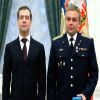
Maxim Suraev is a test cosmonaut belonging to the cosmonaut squad of the Federal State Budgetary Institution “Research Test Center for Cosmonaut Training named after Yuri Gagarin”. He holds the rank of Colonel.
He was born on May 24, 1972, in Chelyabinsk, into a military family. He is a Russian national. In 1989, he completed his studies at secondary school No. 5 in Noginsk, Moscow Region. He graduated with honors from the Kachinskoye Higher Military Aviation School named after A.F. Myasnikov in 1994. In 1997, he graduated with honors from the Air Force Engineering Academy named after N.E. Zhukovsky. In 2007, he completed his studies at the Russian Academy of Public Administration under the President of the Russian Federation.
He joined the military in 1989 and has been serving ever since. From 1994 to 1997, he was assigned to combat units in the Air Force after his graduation from school. During this time, he gained expertise in flying L-39 and Su-27 aircraft, accumulating a total flight time of approximately 700 hours. Additionally, he successfully completed over 100 parachute jumps. In 2012, he transitioned to the reserve after being discharged from the army.
In June 1997, he was accepted into the cosmonaut squadron at the Gagarin Cosmonaut Training Research and Test Center as a candidate for test cosmonaut. From 1998 to 1999, he underwent comprehensive space training. In December 1999, he officially achieved the status of a test cosmonaut. Starting from January 2000, he participated in training for International Space Station missions as part of a team of cosmonauts.
He took his first trip to space as the commander of the Soyuz TMA-16 spacecraft and as a flight engineer for the 21st and 22nd main expeditions to the International Space Station from September 30, 2009 to March 18, 2010. He embarked on this journey alongside Jeffrey Williams from the United States and Guy Laliberté from Canada, who was the eighth space tourist.
On October 2, 2009, the Soyuz TMA-16 successfully connected to the International Space Station. Then, on March 18, 2010, it detached and the spacecraft’s descent vehicle made a gentle landing in Kazakhstan, approximately 57 km away from the city of Arkalyk. This incredible mission lasted for 169 days, 4 hours, 9 minutes, and 37 seconds. Additionally, during the flight, he experienced a spacewalk that lasted for an impressive 5 hours and 44 minutes.
He became the pioneer Russian astronaut to maintain an online journal, or blog, during his time in space. On his page on the Roscosmos website, he shared insights into the daily life and work of the crew aboard the International Space Station. This included fascinating details about growing wheat and breeding butterflies in zero gravity, the experience of sleeping in a sleeping bag, the unique challenges of space food, and even the presence of a ship’s bell on the station. The cosmonaut actively engaged with readers by answering their questions in the blog, ultimately writing a total of 98 messages.
For his bravery and heroism demonstrated during his mission on the International Space Station, Colonel Suraev Maxim Viktorovich was bestowed with the prestigious title of Hero of the Russian Federation and awarded the distinguished Gold Star medal by a decree from the President of the Russian Federation on October 30, 2010.
He served as the commander of the Soyuz TMA-13M spacecraft during his second space mission. This mission took place from May 28 to November 10, 2014, as part of the 40th and 41st main expeditions to the International Space Station. His fellow crew members on this mission were Gregory Wiseman from the United States and Alexander Gerst from Germany.
The Soyuz TMA-13M successfully docked with the International Space Station on May 29, 2014. After completing its mission, on November 10, 2014, the spacecraft undocked and its descent vehicle made a soft landing in Kazakhstan, north of the city of Arkalyk. The duration of the flight was 165 days, 8 hours, 1 minute, and 9 seconds. During the mission, he also conducted a spacewalk that lasted 3 hours and 41 minutes.
Overall, his two space flights totaled 334 days, 12 hours, 10 minutes, and 46 seconds. He also spent a total of 9 hours and 25 minutes outside the spacecraft during two spacewalks.
Colonel (2006), a pilot-cosmonaut from the Russian Federation, received the Order of Merit to the Fatherland, 4th degree (8.03.2016), as well as various medals, including the “For Merit in Space Exploration” (12.04.2011).
He was granted Honorary Citizenship of Noginskiy District, Moscow Region on 4.03.2010.
From 2014 to 2016, he served as a member of the Public Chamber of the Moscow region. His qualifications include “Military pilot 3rd class”, “Instructor of parachute and airborne training”, “Diving officer”, “Astronaut 3rd class”, and “Test Astronaut 2nd class”.
In 2011, a secondary school in the city of Noginsk, Moscow Region was named after him – Secondary School No. 5. Additionally, a memorial sign was erected in Noginsk on Victory Square.
Biography prepared by: © Vitaly Smirnov (Severodvinsk).
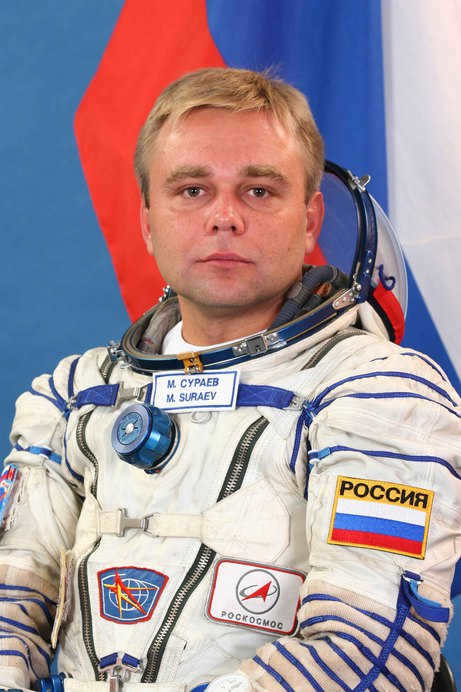
Cosmonaut Maxim Suraev was born on May 24, 1972.
- He is the 104th cosmonaut of the USSR and the 506th in the world
- His first flight in 2009 lasted for 169 days, 04 hours, and 10 minutes
- His second flight in 2014 lasted for 165 days, 08 hours, and 01 minute
Biography
Maxim Suraev was born on May 24, 1972 in Chelyabinsk, which is known as the “capital of the Southern Urals”. He spent his childhood in Shadrinsk, a city located in the Kurgan region. Later, Maxim attended high school № 5 in Noginsk, Moscow region. Growing up in a family with an Air Force colonel as his father, Maxim was inspired to follow in his father’s footsteps. After graduating from school in 1989, he enrolled in the Kachinsky Military School of Pilots. In 1994, Maxim successfully completed his education, earning an officer’s diploma with honors and the qualification of a pilot-engineer.
Maxim Suraev attended the Military Academy named after Nikolai Zhukovsky, the renowned pioneer of aerodynamics, where he excelled and graduated with honors in June 1997. During his time at the academy, Maxim Viktorovich underwent extensive training in the research and testing of aviation equipment and armaments. As a result, he earned the qualification of a research pilot-engineer and was bestowed with the rank of captain.
Training for Space Exploration
After completing his studies at the Zhukovsky Military Academy in June 1997, Maxim Suraev entered the cosmonaut squadron as a test cosmonaut candidate. Over the next two years, he underwent comprehensive training in preparation for space missions. By December 1999, Maxim Viktorovich successfully completed his general space training and became a qualified test cosmonaut.
In January 2000, cosmonaut Suraev began specialized training for future missions to the International Space Station (ISS). His dedication and commitment to the program led to him being selected for practical training in survival skills during emergencies and extreme situations. This training took place at Baikonur during the summer of 2004.
In 2007, despite receiving comprehensive training in the astronaut squadron, Maxim Suraev successfully completed his studies at the Academy of Civil Service under the President, specializing in the field of law.
By July 2008, Suraev had joined the 21st expedition to the ISS. The following year, in 2009, he excelled in several pre-flight examinations.
Breaking Free: The Inaugural Flight
On September 30, 2009, the Soyuz TMA-16 spacecraft embarked on its momentous journey away from our planet. Leading the crew was the esteemed spacecraft commander, Maxim Suraev, accompanied by flight engineer Jeffrey Williams from the United States, and the renowned space tourist and flight participant, Guy Laliberté from Canada.
A Quest for Untold Records
Just a day later, the crew successfully transferred aboard the International Space Station (ISS). Alongside their numerous scientific research endeavors, Maxim Viktorovich embarked on his own pioneering venture, launching his very own video blog entitled “News from Weightlessness”. With this endeavor, he etched his name in history as the first-ever Russian space video blogger.
After a remarkable 169 days in space, Cosmonaut Suraev made his triumphant return to Earth on March 18, 2010, marking the end of an extraordinary space mission.
Maxim Viktorovich continued his space training until May 2014. Throughout this time, he had the opportunity to participate in “aquatic training” sessions, which involved practicing actions such as reentering the Earth’s atmosphere, changing cosmonauts’ clothing inside the descent vehicle, exiting the vehicle, and organizing the space team on the water. He also received training on the “Teleoperator” simulator, where he gained experience in remotely operating unmanned aerial vehicles, including the transport “Progress”, from the space station.
Another space journey
Following the successful completion of several rigorous control and docking examinations, cosmonaut Suraev was selected as the commander of the Soyuz TMA-13M crew. Alongside flight engineers Gregory Weisman from the United States and Alexander Gerst from Germany, he embarked on their mission from Baikonur on May 28, 2014.
During his second venture into outer space, Maxim Suraev had the opportunity to partake in a spacewalk. For a duration of 3 hours and 41 minutes, cosmonaut Suraev conducted research and carried out installation tasks outside the confines of the space station.
Colonel Maxim Suraev safely returned to Earth on November 10, 2014, successfully concluding a remarkable 165-day-long space mission.
Later years
Following his successful tenure as a cosmonaut, Maxim Viktorovich made a transition into politics, ultimately joining the General Council of the United Russia party in February 2016.
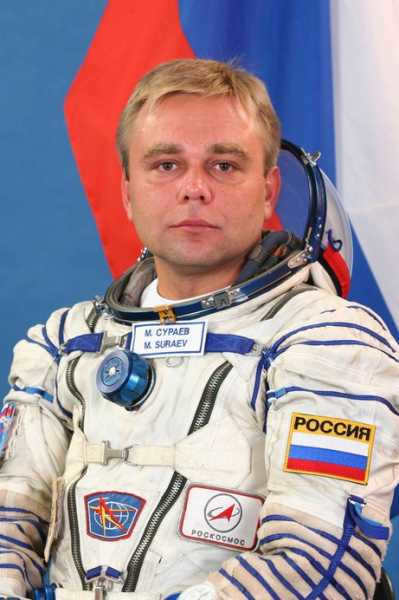
Maxim Suraev, born on May 24, 1972, is a renowned cosmonaut.
- He is the 104th cosmonaut of the USSR and the 506th in the world.
- In 2009, he spent 169 days, 04 hours, and 10 minutes in space.
- In 2014, he spent 165 days, 08 hours, and 01 minute in space.
Maxim Suraev was born on May 24, 1972 in the city of Chelyabinsk, known as the “capital of the Southern Urals.” He spent his childhood in Shadrinsk, a town located in the Kurgan region. Later, Maxim attended high school No. 5 in Noginsk, Moscow region. Growing up in an Air Force colonel’s family, Maxim was inspired to follow in his father’s footsteps. After graduating from school in 1989, he enrolled in the Kachinsky Military School of Pilots. In 1994, Maxim successfully completed his education, achieving an officer’s diploma with honors and becoming a qualified pilot-engineer.
After attending the Military Academy named after Nikolai Zhukovsky, the renowned pioneer of aerodynamics, Maxim Suraev successfully completed his studies with distinction in June 1997. During his time at the academy, Maxim Viktorovich specialized in the research and testing of aviation equipment and armaments. As a result, he obtained the esteemed qualification of a research pilot-engineer and attained the rank of captain.
Space training
Following his graduation from the Zhukovsky Military Academy in June 1997, Maxim Suraev was admitted as a candidate to the cosmonaut squadron, specifically as a test cosmonaut. From June 1997 to December 1999, Maxim Viktorovich completed comprehensive space training and successfully obtained his test cosmonaut qualification. In January 2000, cosmonaut Suraev underwent training for planned missions to the International Space Station (ISS). Additionally, during the summer of 2004, he actively participated in practical training sessions focused on survival in emergency and extreme situations, which were conducted at Baikonur.
Since July 2005, he has been part of the cosmonaut teams for the 15th, 16th, and 17th expeditions to the space station. In 2006, he took part in another survival training, this time in a forested and deserted area during winter conditions. He assumed the role of crew commander. Maxim Viktorovich also served as a member of the 19th and later the 22nd expeditions to the space station.
In 2007, despite his ongoing training in the astronaut squadron, Maxim Suraev successfully completed his law studies at the Academy of Civil Service under the President.
July 2008 marked Suraev’s inclusion in the upcoming 21st expedition to the ISS. In 2009, he excelled in several pre-flight exams.
On September 30, 2009, the Soyuz TMA-16 spacecraft departed from Earth. The crew included Maxim Suraev, the commander of the spacecraft, Jeffrey Williams from the United States as the flight engineer, and Guy Laliberté from Canada, who was a space tourist and a participant in the flight.
There are no existing records
A day later, the crew transferred to the International Space Station (ISS). Alongside various scientific research projects, Maxim Viktorovich also maintained his own video blog titled “News from weightlessness.” He became the first Russian space video blogger.
Cosmonaut Suraev returned to Earth on March 18, 2010, marking 169 days since the space mission commenced.
Maxim Viktorovich continued his space training until May 2014. Throughout this time, he had the opportunity to participate in “aquatic training” sessions, which involved practicing reentry, changing cosmonauts’ clothes inside the descent vehicle, exiting the vehicle, and coordinating the space team’s activities on the water. He also received training on the “Teleoperator” simulator, where he remotely controlled the docking of different unmanned aerial vehicles, including the transport “Progress,” from the space station.
Another space journey
After successfully completing multiple control and docking examinations with outstanding scores, astronaut Suraev was designated as the commander of the Soyuz TMA-13M crew. On May 28, 2014, he embarked on his second space mission alongside flight engineers Gregory Weisman from the United States and Alexander Gerst from Germany, launching from Baikonur.
During this particular space expedition, Maxim Suraev had the opportunity to conduct a spacewalk. For a duration of 3 hours and 41 minutes, he engaged in research and installation tasks outside of the space station.
Colonel Maxim Suraev concluded his 165-day-long space mission by safely landing on November 10, 2014.
Continued Life
Following a successful career as a cosmonaut, Maxim Viktorovich made the decision to transition into the realm of politics. In February 2016, he was appointed as a member of the General Council for the United Russia party.
Maxim Suraev, a Colonel in the military, holds the distinction of being the first Russian cosmonaut to maintain a blog while in orbit. As a young child, he aspired to become a military pilot, never imagining that he would one day journey beyond Earth’s atmosphere. However, fate had a different path in store for him, leading him to join the esteemed ranks of Russian cosmonauts.
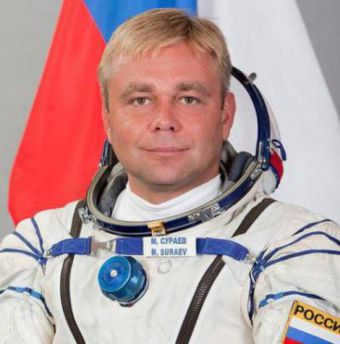
Maxim Viktorovich Suraev’s Life Story
Maxim Viktorovich Suraev was born on May 24, 1972. Originally from Chelyabinsk, he spent his childhood in Shadrinsk, located in the Kurgan region. Growing up in a military family, Suraev experienced frequent relocations due to his father’s career as a military pilot. From a young age, Maxim aspired to follow in his father’s footsteps. However, little did anyone know that he would one day become a cosmonaut. During that time, space exploration seemed like a distant and almost unattainable dream.
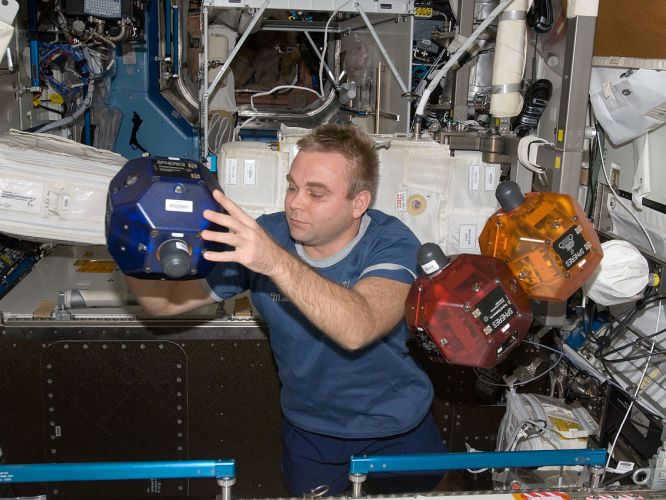
Maxim attended secondary school in Noginsk city. After finishing school, he joined the cadets at the prestigious Kachinsky Higher Military School of Pilots, named after Myasnikov. After completing his training, Maxim became a certified flight engineer.
Later on, Maxim successfully graduated from the Zhukovsky Academy with honors. However, he didn’t stop there. A few years later, he pursued a career in law and became a qualified lawyer.
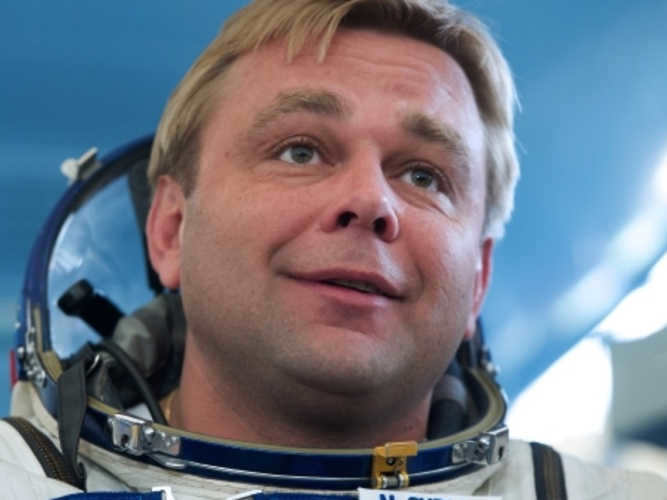
Heading Towards Outer Space
Ever since December 1997, Maxim Viktorovich has held a position as a member of the squadron of cosmonauts in Russia. Following the successful completion of the standard course of general space training in the autumn of 1999, Maxim was bestowed with the prestigious qualification of a test cosmonaut. He then went on to train as part of a group that was being prepared for missions to the International Space Station.
Between 2006 and 2008, Suraev underwent rigorous training as a backup crew member for the spacecraft and station commander role. He was subsequently prepared for the position of flight engineer. In 2009, Suraev commenced his training as a member of the main crew for the International Space Station.
The international crew, which included Maxim Viktorovich, embarked on a journey to the ISS on September 30, 2009. What’s fascinating is that Suraev made history as the first cosmonaut-blogger, documenting his experiences in an online diary from space. Experts hail Suraev’s blog as the most uplifting and captivating among all other “space” diaries.
Suraev safely returned to his beloved Earth on March 18, 2010, gracefully touching down in Kazakhstan.
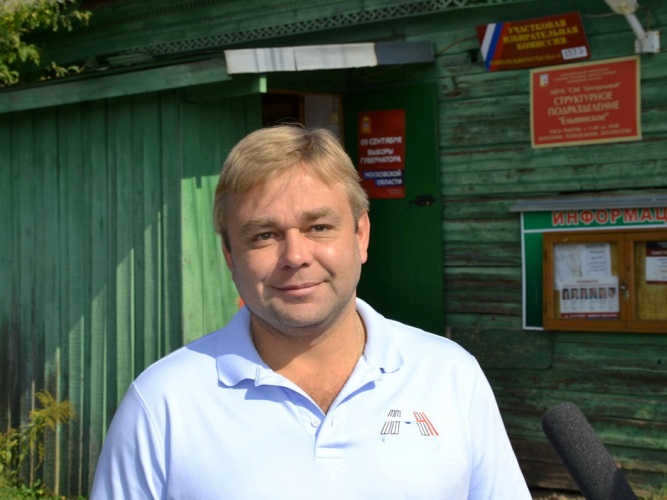
Maxim Suraev’s Involvement in Public Activities
In the subsequent years, Maxim Suraev actively participated in various social and political initiatives. In 2013, he took on the role of leading the election campaign for A.Yu. Vorobyev in the Moscow region leadership elections. By 2016, Suraev became a member of the General Council of “United Russia.” Later that same year, he also became a member of the State Duma of the VII convocation. As a result, Suraev was relieved of his responsibilities as a test cosmonaut and subsequently removed from the cosmonaut team.
Maxim Viktorovich is happily married. Together with his wife Anna, they are raising two daughters.
Maxim Suraev is the 104th Russian cosmonaut and a recipient of the prestigious title of Hero of the Russian Federation. He was granted this honor in October 2010 in recognition of his bravery and exceptional courage displayed during a space mission.
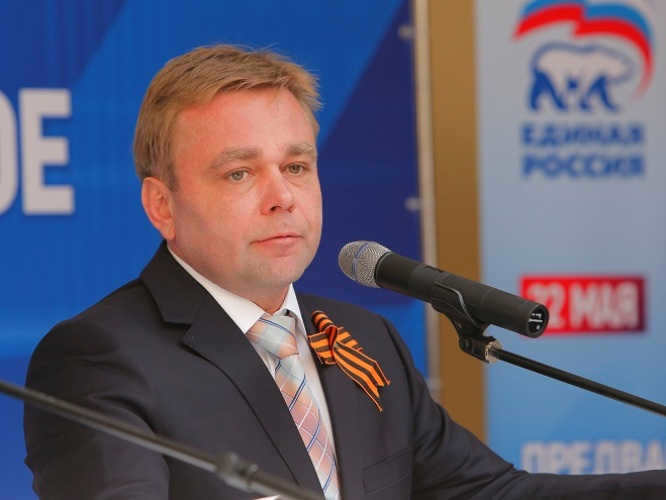
- Biography and personal life of Maxim Liksutov
- Timur Viktorovich Bokancha: biography, career, and personal life
- Maxim Andreyevich Shingarkin: biography, career, and personal life
- About the TV series “Kitchen”
- Biography, career, and personal life of Serafima Savelyevna Nizovskaya
- Vyacheslav Viktorovich Sizov: biography, career, and personal life
- Maxim Osipov: biography, creative work, career, and personal life
- Biography, career, and personal life of Yury Viktorovich Arkhangelsky
- Murat Gassiev: biography, career, and personal life
- Mikhail Anatolyevich Abyzov: his life, professional journey, and personal affairs
- Sergey Viktorovich Pryanishnikov: his biography, career path, and private life
- Maxim Reshetnikov: his life story, family background, and professional achievements
- Maximilian Alexandrovich Voloshin: exploring his biography, creative legacy, and personal relationships
- Mikhail Sergeevich Bashkatov: his life journey, professional accomplishments, and personal affairs
- Maxim Yaritsa: his biography, creative work, career progression, and personal life
- Murat Anatolievich Tkhagalegov: his life story, professional path, and personal relationships
- Stepan Makarov: exploring his biography, creative work, career journey, and personal life
- Ivan Zamotayev: his life, professional accomplishments, and personal affairs
- Sergey Viktorovich Ugryumov: his biography, career path, and private life





